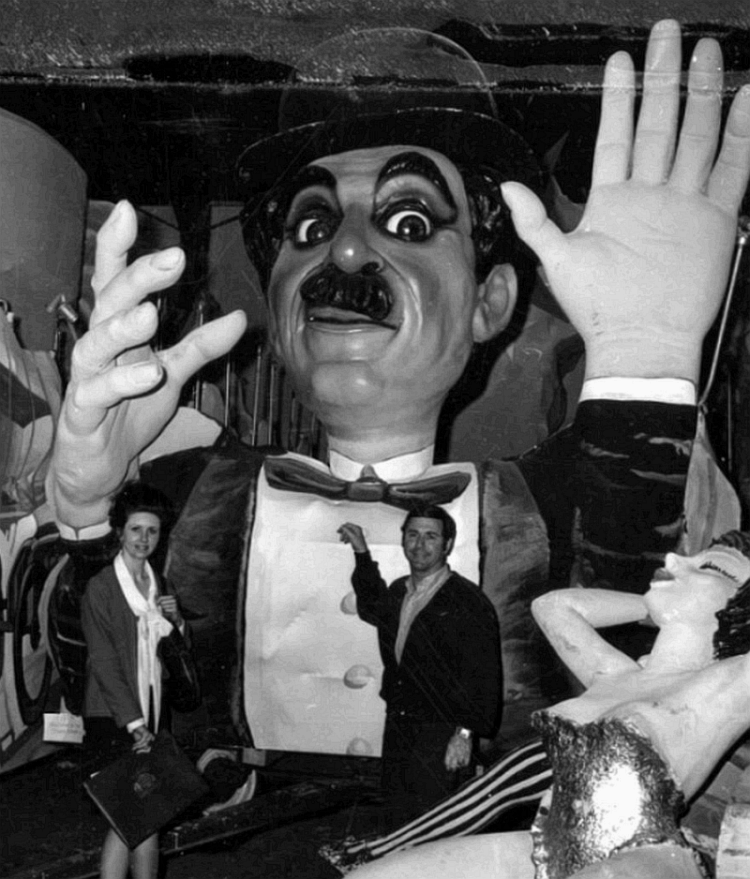|
Today in New Orleans History |
|
|
November 24


WCKW-AM radio station signed on in December 2, 1970 as country music outlet "WKQT"
and was the sister station of WCKW-FM. These stations were founded by Sidney Joseph Levet III, a New Orleans native and an
electronic engineer. In February 1990, Levet was named Broadcaster of the Year by the Louisiana Association of Broadcasters.
By 1973 both stations became simulcasts with the AM becoming "WCKW" on March 2, 1985. After the FM flipped
to active rock, the AM was sold in 2000 to River Parishes Radio who switched it to a gospel format. Covenant Network purchased
the station on January 2, 2007, and began transmitting Catholic programming. The station briefly became "WLTS"
on October 20, 2000. The station was re-assigned the call sign "WCKW" by the Federal Communications Commission (FCC)
on November 24, 2000.
John William Corrington (October 28, 1932 – November 24, 1988) was an American
film and television writer, novelist, poet and lawyer. He received a B.A. degree from Centenary College, in 1956 and his M.A.
from Rice University in 1960, the year he took on his first teaching position in the English Department at Louisiana State
University. While on leave from LSU, Corrington obtained his D.Phil. in 1965, from the University of Sussex and then moved
to Loyola University New Orleans in 1966, as an Associate Professor of English, where he also served as chair of the English
Department. Corrington graduated from Tulane University Law School in 1975, joined a small New Orleans personal injury law
firm, Plotkin and Bradley, and spent the next three years practicing law. During this time Corrington published four
books of poetry, Where We Are (1962), The Anatomy of Love (1964), Mr. Clean (1964) and Lines to the South (1965). With Miller
Williams, Corrington edited Southern Writing in the Sixties: Fiction (1966) and Southern Writing in the Sixties: Poetry (1967).
Corrington also published four books of short stories, The Lonesome Traveler (1968), The Actes and Monuments (1978), The Southern
Reporter (1981) and All My Trials (1987) and four novels, And Wait for the Night (1964), The Upper Hand (1967), The Bombardier
(1970) and Shad Sentell (1984). He won an Award in Fiction from the National Endowment for the Arts and had a story included
in the O. Henry Award Stories (1976) and three in the Best American Short Stories series, (1973, 1976 and 1977). With his
wife, Joyce Hooper Corrington, Corrington wrote five screenplays, Von Richthofen and Brown (1969), The Omega Man (1970), Boxcar
Bertha (1971), The Arena (1972) and Battle for the Planet of the Apes (1973) and a television film, The Killer Bees (1974).
Corrington gave up the practice of law in 1978 and he and his wife, Joyce Corrington, became head writers for daytime serials.
The Corringtons scripted Search for Tomorrow (1978–80), Another World (1980), Texas (1980–81), General Hospital
(1982; hired by Gloria Monty), Capitol (1982–83, hired by John Conboy) and One Life to Live (1984). They also wrote
and produced Superior Court, a syndicated series (1986–89). Texas and Superior Court were each nominated twice for a
Daytime Emmy Award. During this time, the Corringtons also published So Small a Carnival (1986), A Project Named Desire (1987),
A Civil Death (1987) and The White Zone (1990). After Bill Corrington's death, his novella, "Decoration Day",
was adapted as a Hallmark Hall of Fame television special (1990), which was nominated for an Emmy and won a Christopher Award
and a Golden Globe award. The Collected Stories of John William Corrington was published in 1990, by the University of Missouri
Press. (From wikipedia)
The New Orleans Bee (French: L’Abeille de la Nouvelle-Orléans, Spanish: La Abeja de Nueva
Orleans) was a newspaper in New Orleans, Louisiana, founded on September 1, 1827, by François Delaup and originally
located at 94 St. Peter, between Royal and Bourbon. Initially published three times a week in French, an English section was
added on November 24, 1827, and in this form it was the most successful of New Orleans daily newspapers in
the middle of the nineteenth century. The English section was abandoned in 1872 because of increased competition from English-language
newspapers, but later restored. A Spanish-language section (Abeja) was published in 1829-1830. Until at least 1897 L'Abeille
remained "almost certainly the daily newspaper of choice" for French officials in New Orleans. The title was purchased
in 1921 by The Times-Picayune and was published weekly until it closed in 1923. It was by some accounts the last French-language
newspaper in New Orleans, ceasing publication on December 27, 1923, after ninety-six years; others assert that it was outlasted
by Le Courrier de la Nouvelle Orleans, which continued until 1955. |
|
|

To receive an update for each day in New Orleans history,
join our facebook page - Today in New
Orleans History.
Analytics |




